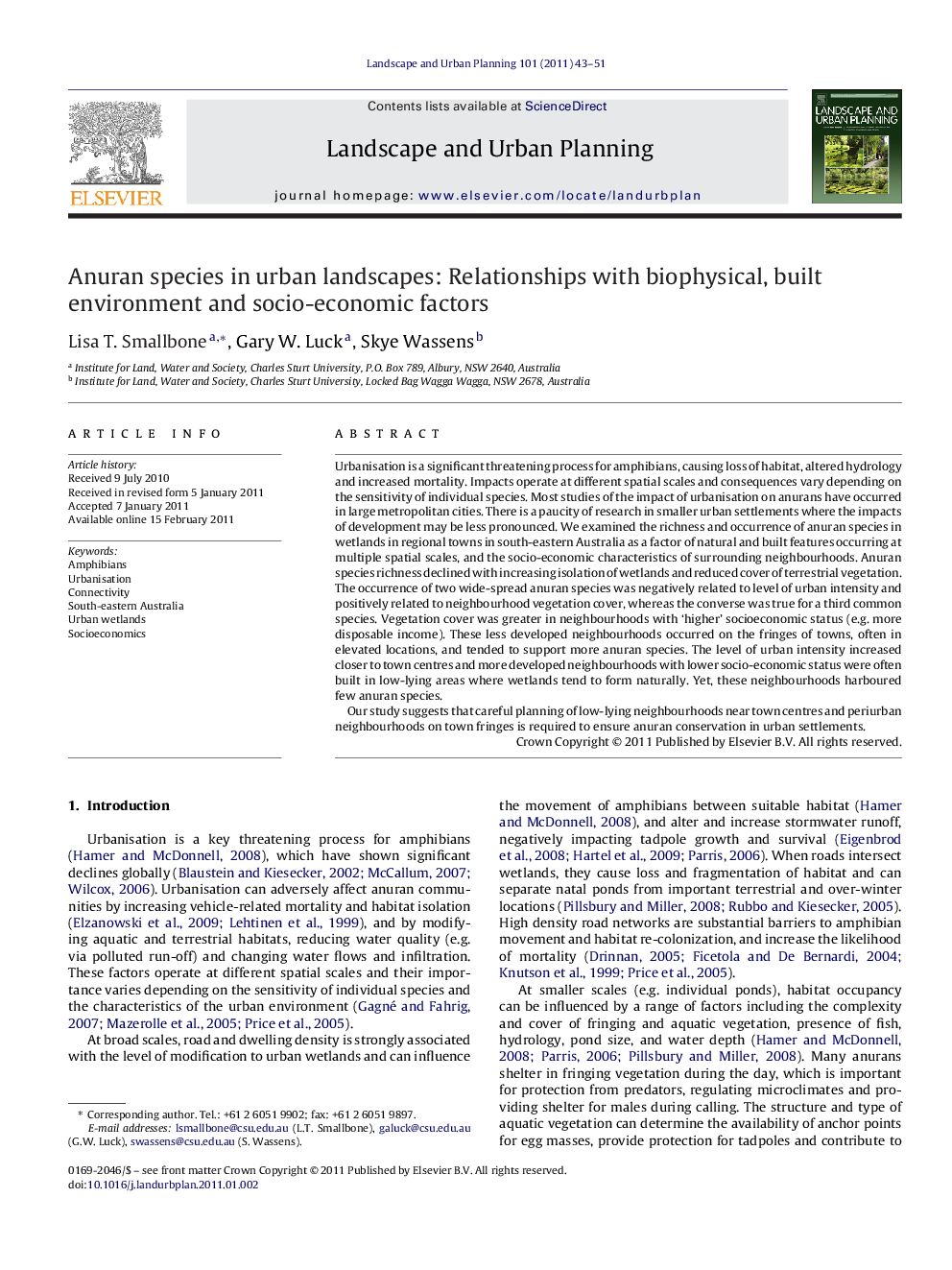| Article ID | Journal | Published Year | Pages | File Type |
|---|---|---|---|---|
| 1049758 | Landscape and Urban Planning | 2011 | 9 Pages |
Urbanisation is a significant threatening process for amphibians, causing loss of habitat, altered hydrology and increased mortality. Impacts operate at different spatial scales and consequences vary depending on the sensitivity of individual species. Most studies of the impact of urbanisation on anurans have occurred in large metropolitan cities. There is a paucity of research in smaller urban settlements where the impacts of development may be less pronounced. We examined the richness and occurrence of anuran species in wetlands in regional towns in south-eastern Australia as a factor of natural and built features occurring at multiple spatial scales, and the socio-economic characteristics of surrounding neighbourhoods. Anuran species richness declined with increasing isolation of wetlands and reduced cover of terrestrial vegetation. The occurrence of two wide-spread anuran species was negatively related to level of urban intensity and positively related to neighbourhood vegetation cover, whereas the converse was true for a third common species. Vegetation cover was greater in neighbourhoods with ‘higher’ socioeconomic status (e.g. more disposable income). These less developed neighbourhoods occurred on the fringes of towns, often in elevated locations, and tended to support more anuran species. The level of urban intensity increased closer to town centres and more developed neighbourhoods with lower socio-economic status were often built in low-lying areas where wetlands tend to form naturally. Yet, these neighbourhoods harboured few anuran species.Our study suggests that careful planning of low-lying neighbourhoods near town centres and periurban neighbourhoods on town fringes is required to ensure anuran conservation in urban settlements.
Graphical abstractFigure optionsDownload full-size imageDownload as PowerPoint slideResearch highlights► We examined the richness and occurrence of anuran species in wetlands in regional towns in south-eastern Australia as a factor of natural and built features occurring at multiple spatial scales, and the socio-economic characteristics of surrounding neighbourhoods. ► Richness declined with increasing wetland isolation and reduced cover of vegetation. ► Species presence was related to level of urban intensity and vegetation cover. ► Level of urban intensity and vegetation cover was linked to socio-economic status. ► We suggest options for planners to mitigate impacts and improve wetland habitat.
